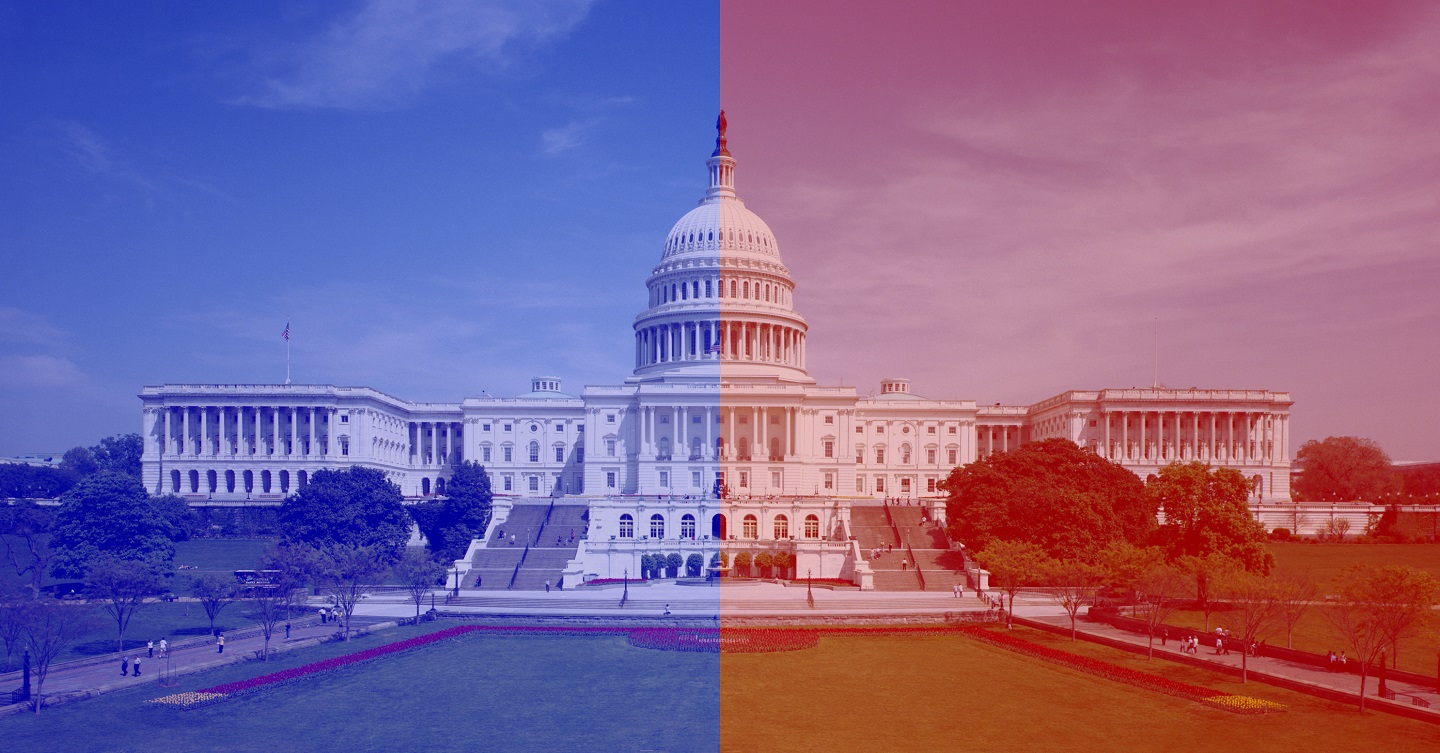
Both U.S. political parties’ ideologies often form in, are fed by, and survive in American public policy think tanks.
The United States has shown (and continues to show) glaring signs that its democracy is bleeding internally. In 2017, the Economist Intelligence Unit, a research analysis division of the magazine The Economist, called the United States a flawed democracy, a condition not achieved overnight. The phrases “America in decline” or “American decline” in think tanks’ analyses are not new, and according to Noam Chomsky, an American philosopher and linguist, the phrases can actually be traced as far back as the aftermath of World War II. What is new is the shift of such policy research institutions from weighing policy considerations or providing policy recommendations in terms of improving the quality of life of all Americans to framing proposals in strict ideological terms.
Both U.S. political parties’ ideologies often form in, are fed by, and survive in American public policy think tanks. The irony with many such ideological think tanks is that, even if a policy position is viewed favorably across the U.S. political spectrum, they work to repudiate their opposite side’s perspective of the position, by offering counter-policy positions, and by reinforcing poisonous ideological differences among parties. Some American policy think tanks, despite their scholars’ intellectual expertise, operate in ideological silos, which guard against opposing ideas. Their members practice groupthink, even in the face of overwhelming evidence against their policy stances. Such biases can lead to the ‘silencing’ of certain groups’ policy aspirations, or interests, with potentially disenfranchising effects. Without adequate, differing ideological representation in think tanks, scholars may produce fractured policy advice that does not capture ideological minority groups’ desires.
What are Think Tanks?
American think tanks are research institutions that assess and/or recommend evidence-based policy solutions for certain interest groups in America to policymakers. They also bring special attention to apparently overlooked policy concerns that policymakers need to address and advise them on how to do so. The experts that work in these institutions are social architects with profound knowledge of economics, nuclear security, energy, law, international relations, technology, etc., and that makes these organizations well-equipped to craft policies that benefit Americans who share similar and contrary partisan ideologies. So why don’t they?
American policy think tanks first surfaced in the 20th century. Today, they produce actionable ideas on domestic and international topics pertaining to national security, science and technology, the environment, health, energy, international development, and so on. The halls of think tanks are normally occupied by researchers and former high-ranking government officials, who have more interest in exploring policy issues up close alongside actors in government agencies and congressional bodies, rather than from afar, such as through teaching in universities. Think tanks form the connective tissue which links academia to government decision-makers. Over time, think tanks have gained incredible importance, as seen in former President Donald Trump’s administration. Members of the Heritage Foundation, a conservative U.S. think tank, filled the ranks of Trump’s campaign staff and, later, of his administration.
When a conservative or liberal president-to-be becomes the leader of the free world, opposing ideological think tanks do not lose their influence or their funding. Rather, they draft counter-policy recommendations, host discussions and workshops centered on the failures of the person in office, and fund marketing campaigns looking for people and organizations that agree with their agenda. For example, in 2016, the Heritage Foundation published a report countering President Obama’s climate change policies and characterizing it as extreme. This report labeled actions taken to improve ecosystem conditions as “hysteria over global warming.” This was despite bipartisan support for addressing climate change and despite the results of a 2018 Pew Research Center poll, which found that 67% of U.S. adults think the government is doing too little to combat a warming earth.
Solely conservative or liberal think tanks lack the perspective to propose policies that benefit sweeping shares of the U.S. population who do not belong to their partisan cohort. When this happens, ideologically siloed think tanks lack the objectivity to properly analyze policy proposals from bipartisan think tanks or legislation written by congressional members belonging to an opposing political party. When think tanks do not capture different, or even complementary views, a transfixing cycle emerges that can lead scholars to become less curious about alternative views and more convinced of their own opinions.
Career civil servants, experts, or former politicians who find themselves working in a think tank should look for ways to bridge partisanship inside these policy institutions—not trap themselves in ideological prisms.
Think Tank Avenue
Though public policy research institutions are private entities and can hire whomever they please, in a way, considering the number of former political officials or emerging political appointees having previous or succeeding government experience in them, they operate as a fourth branch of government. For example, the current president of the Hoover Institution, the Honorable Condoleezza Rice, served as Secretary of State under President George W. Bush. The president of the Center for Strategic and International Studies (CSIS), Secretary John Hamre, served as Deputy Secretary of Defense under President Bill Clinton. Dr. Kathleen Hicks, also from CSIS, now serves in the same position under President Joe Biden. More recently, the Secretary of State under President Trump, the Honorable Michael Pompeo, has found a new home as a distinguished fellow at the Hudson Institute. Vice President Mike Pence is now a senior distinguished fellow at the Heritage Foundation. These institutions keep their influence by providing refuge for former officials.
Career civil servants, experts, or former politicians who find themselves working in a think tank should look for ways to bridge partisanship inside these policy institutions—not trap themselves in ideological prisms. When public servants retreat to their ideological silos when their preferred party is out of power, there may be less opportunity for them to apply their intellect. Wharton Business School organizational psychology professor, Adam Grant, describes this pattern as confirmation and desirability bias, that is, seeing what you expect to see and seeing what you want to see. In his book, Think Again, he states, “These biases don’t just prevent us from applying our intelligence. They can actually contort our intelligence into a weapon against truth.”
Some political appointees have emerged from nonpartisan or bipartisan think tanks, which house both conservative and liberal scholars, such as CSIS, Brookings Institution, and the Carnegie Endowment for International Peace. These three think tanks consistently rank higher among all think tanks in the United States based on “research, analysis, …and improving the overall quality of life in the United States,” as assessed by the University of Pennsylvania’s annual Global Think Tank Index Report. That consistency suggests that institutions that aim to publish policy research without partisan blinders do so with a higher quality of scholarship. When nonpartisan or bipartisan ideas are used and when institutions are able to shed themselves of framing problems solely in ideological terms, ostensibly the public benefits.
Bipartisan/Nonpartisan Think Tanks
There are numerous explicitly nonpartisan or bipartisan think tanks. Institutions such as CSIS aim to produce more agreeable policies that cut across the partisan divide. On their ethics and accountability webpage, they broadcast the need for bipartisanship and how express their contributions to that effort, stating:
Why bipartisanship? History shows that no enduring U.S. policy is possible unless there is a foundation of bipartisan support. This is difficult in today’s hyper-partisan climate. But we still think it is right. Every commission assembled by CSIS has a Republican and a Democratic co-chair. Every project is rigorously nonpartisan. We are committed to working across the aisle even if this appears to be a dying practice.
When a federal agency or White House administration uses a bipartisan-engineered policy solution, they are starting with a greater level of agreement among otherwise partisan congressional actors and, therefore, among those that ought to benefit from policy outcomes: U.S. citizens. The role which bipartisan or nonpartisan research institutions play is immeasurable. Policy solutions produced by research institutions which are consistently wedded to one ideological framework (liberal or conservative) can become compromised with mismatched levels of conviction and humility. Bipartisan support does not have to start where it ends: in Congress. It can start in institutions that influence congressional bodies and White House administrations.
Better Policy Outcomes Require Flexibility
The hallmark of wisdom is knowing when a (strongly) held view no longer fits the current time. Policymaking requires strict calculation and recalibration. Recalibration illustrates flexibility of thought over uniformity of it, especially when new information becomes available. Public policy research institutions can do this by supplying the U.S. government with a (large or small) share of bipartisan policy considerations. Abandoning solely conservative or liberal research institutions should not happen; they are critical in pointing out where the other side is wrong. However, increasing the share of opposing ideological scholars in these institutions and publishing that number for public viewing may encourage more bipartisanship, which is better for all Americans. Or, when a White House administration requests think tank services, it should be restricted to only using recommendations that are committed to bipartisan/nonpartisan methods.
When policy experts investigate or recommend a proposal, the solution will be different if examined by a room full of identified conservative or liberal scholars, as opposed to having a sizable partisan minority in the room starting from a different ideological context. This change can lead to less partisanship, richer scholarship, and better policy outcomes.
Chandler A. Myers is a 1st Lieutenant and a Maintenance Officer in the U.S. Air Force. He is currently assigned to the 621st Contingency Response Wing (CRW) stationed at Joint Base McGuire-Dix-Lakehurst. The views expressed in this article are those of the author and do not necessarily reflect those of the U.S. Army War College, the U.S. Army, the U.S. Air Force, or the Department of Defense.
Photo Description: The western front of the United States Capitol.
Photo Credit: Architect of the Capitol (Public Domain) via Wikimedia Commons




